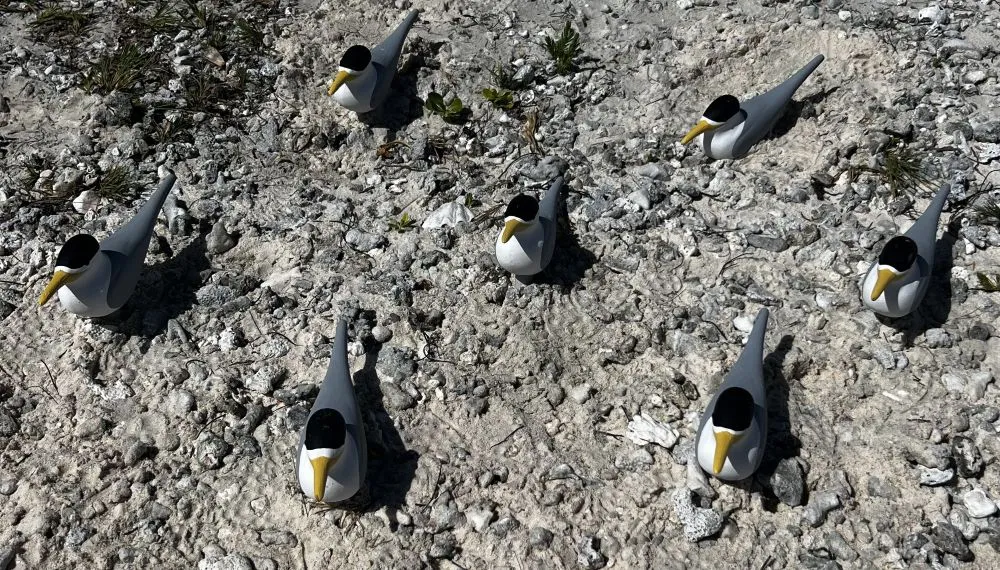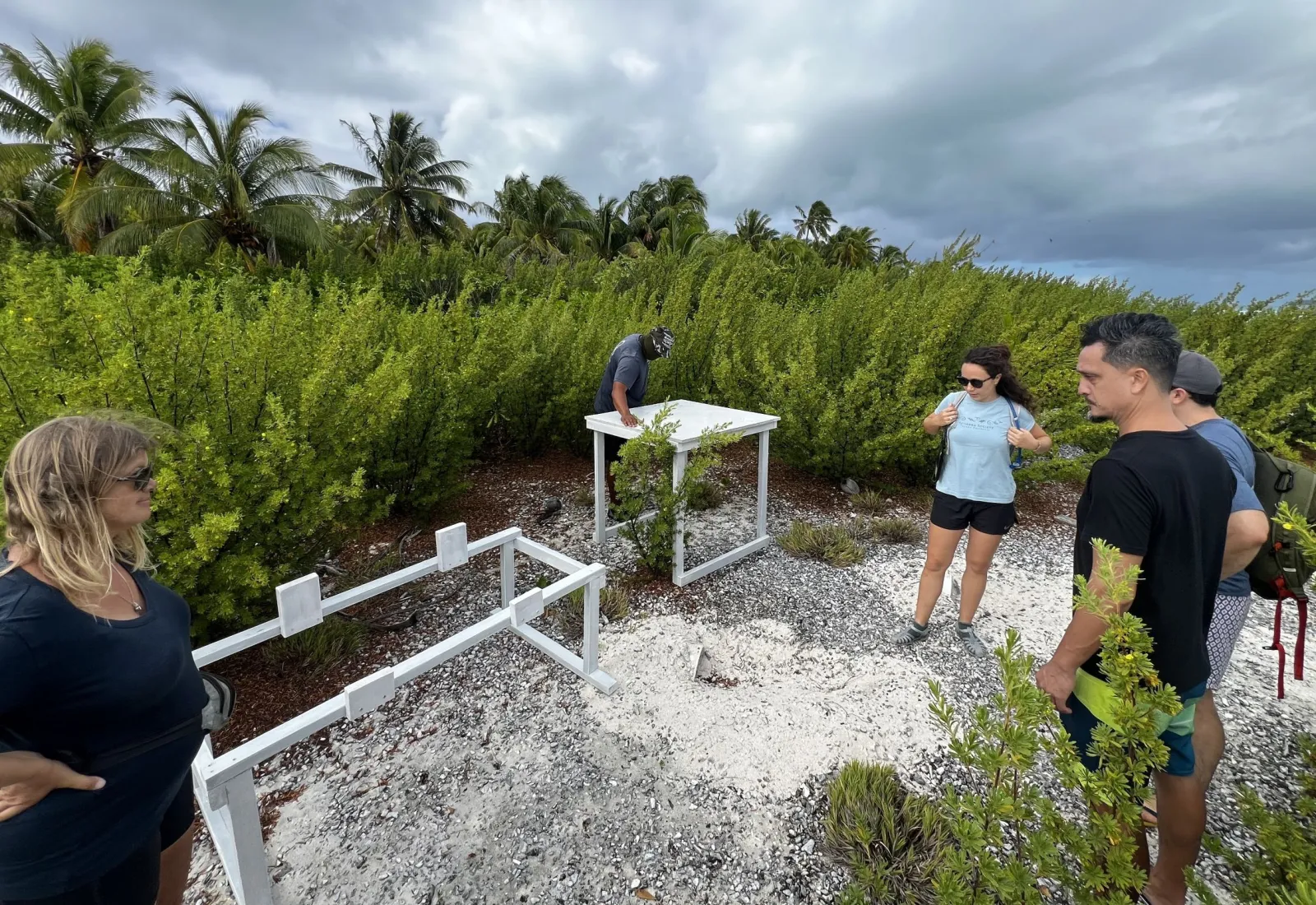These birds play a vital role in the functioning of island ecosystems, particularly by providing nutrients and regenerating coastal vegetation. By combining social attraction techniques and habitat restoration, the project seeks to accelerate the recovery of these bird communities and the ecological services they provide.

Summary of field activities
An initial mission, carried out in July 2025, enabled the preparation of the technical installations necessary for the implementation of the attraction. Solène Fabre and Dana designed and assembled on-site the supports for the solar panels, the tables for the speakers and the sound systems, while exploring certain motu to identify the most suitable sites for the installation of the equipment and the diffusion of sounds.

During the August 2025 mission, the team fully installed the sound systems and bird silhouettes used as visual bait at two pilot sites. The equipment was transported and assembled in the field, acoustic tests were conducted, and photo tracking cameras were set up to document site visits. This mission also coincided with the visit of a delegation from the European Union, which came to observe the concrete progress of this exemplary project for island conservation.

Impacts and preliminary results
After a month of operation, the acoustic and visual systems have proven reliable and adapted to the atoll's conditions. Initial observations do not yet indicate active colonization, but the teams are awaiting data from the cameras to confirm the first potential visits. This implementation represents a milestone: it is the first application in Tetiaroa of a social attraction technique already proven elsewhere in the Pacific, notably in Hawaii and New Zealand, and recently introduced in French Polynesia by SOP Manu.
Perspectives
Future missions will focus on analyzing photographic records to assess site attendance and adjusting the devices if necessary. The team plans to return to Tetiaroa at the end of October 2025 to verify the proper functioning of the equipment and to present the project as part of scientific communication and outreach activities. In the longer term, ATTRACT aims to be extended to other motu as their ecological restoration progresses, and to serve as a model for other Polynesian islands wishing to restore their seabird populations.



